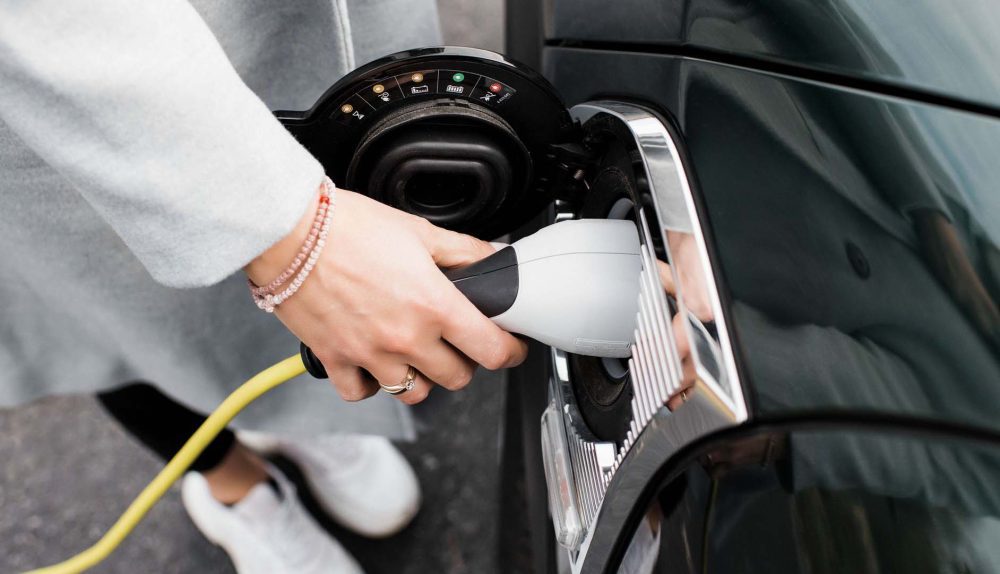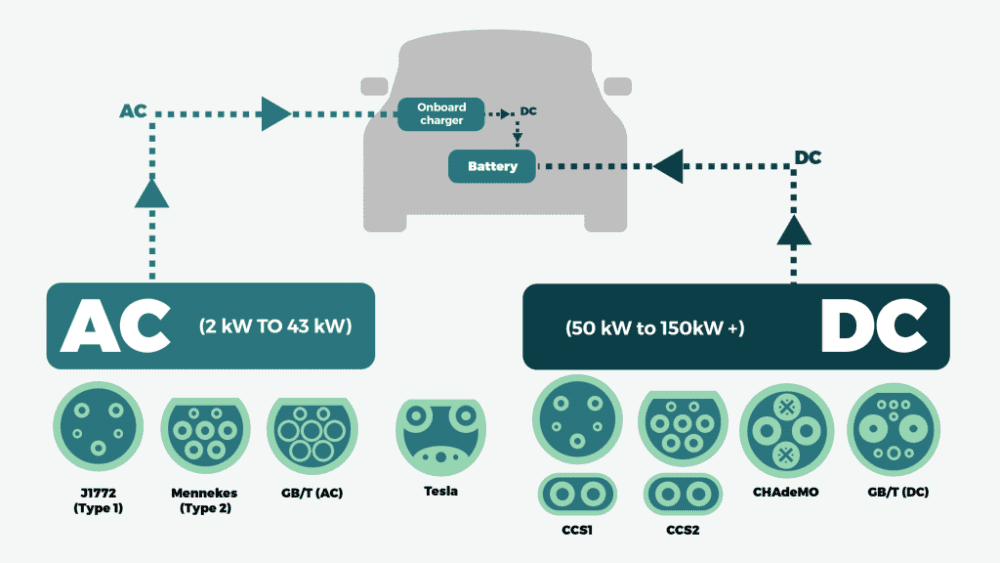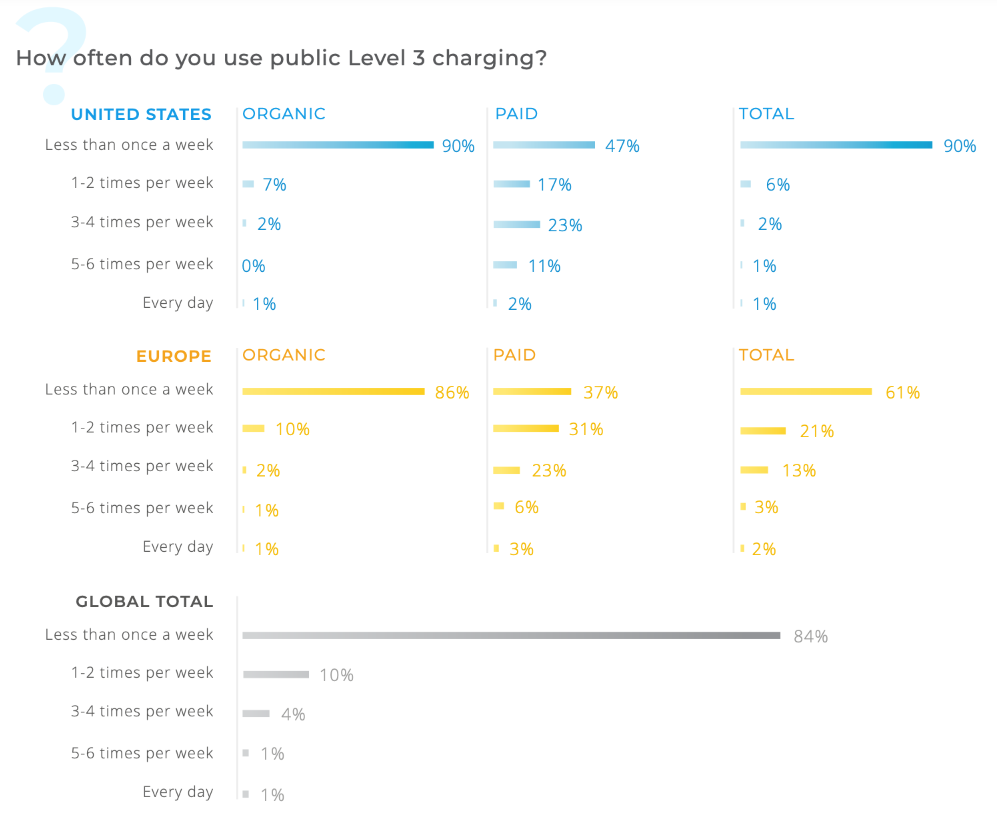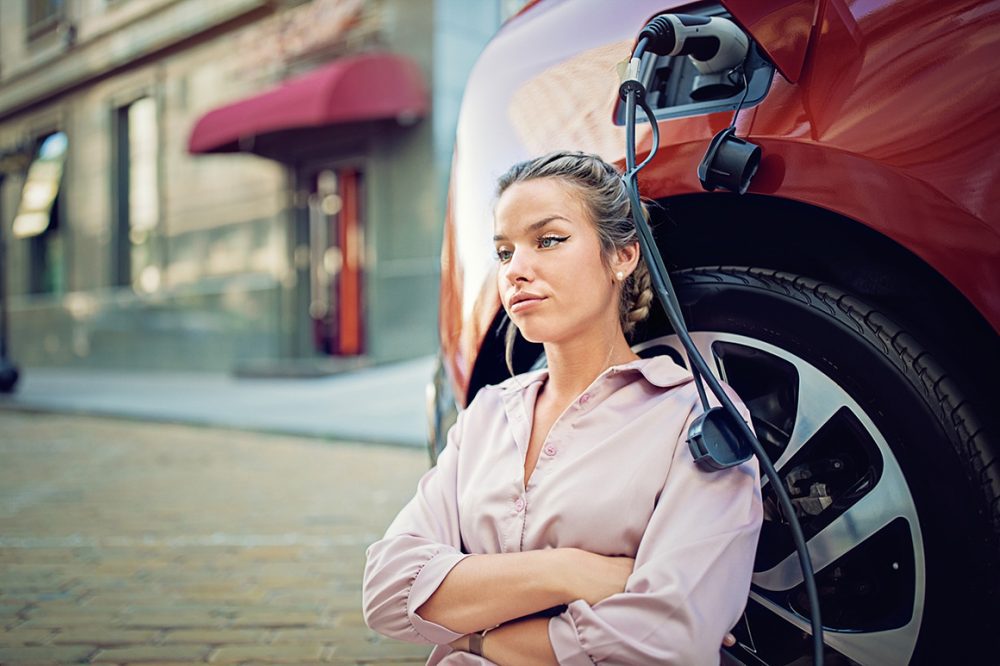Intro
Global oil prices are soaring due to the impact of war and epidemics. The environmental impact of conventional cars and the soaring gas prices have led to a growing interest in electric vehicles. Compared with classic cars, electric vehicles have many advantages, such as lower cost of use, faster acceleration, and lower maintenance costs.

However, for first-time users, the first problem they have to face is charging electric vehicles. To let more people enjoy the convenience of electric cars, we have collected 9 common questions about EV charging and provided answers.
- After plugging in the charging connector, the electric vehicle can’t be charged, what should I do?
- What should I do if I can’t pull out the charging connector after charging?
- Can electric vehicles be charged on rainy days?
- What is the difference between fast charging and slow charging, and how long does it take to fully charge an electric car respectively?
- Should I choose a fast EV charging station or a slow EV charging station?
- Do electric vehicles need to be charged every day?
- How about frequent power failure of the charging station?
- How can I check the charging information, such as charging volume and charging power?
- How long does it take to fully charge an electric vehicle?
1. After plugging in the charging connector, the electric vehicle can’t be charged, what should I do?
The charging process of new energy vehicles has six main steps: physical connection, low-voltage auxiliary power-up, charging handshake, charging parameter configuration, charging, and charging end.
When the EV charging station charges the electric vehicle, the first step is to confirm matching the charging connector and the charging interface.
If the charging connector and the EV interface to match, it will go to the next step. Low voltage assisted charging is a process where the BMS of the EV and the charging station confirm each other.
If the vehicle and the charging post-match, the BMS sends detailed vehicle information to exchange information with the charging port. Standard charging cannot be completed if the vehicle and the charging post do not match.

Usually, once a charging failure or charging interruption occurs, the charging port will display the charging failure reason code.
It is recommended to call the charging post customer service or ask the charging station staff the meaning of the fault code indicated to determine whether the charging failure is caused by the vehicle or the charging port.
2. What should I do if I can’t pull out the charging connector after charging?
There are many reasons for this problem. If it happens, the following ways can usually solve the problem. The premise of the operation is to confirm that your car has stopped charging and the vehicle has been unlocked.

Here are three solutions:
a.Charging connector manual unlocking
The charging connector ports have a locking function to avoid accidental disconnection when charging the car.
We can ask the charging station operator the location of the emergency unlocking device of the charging connector and then use the appropriate tool to toggle in the direction of the connector to unlock it.
b.Restart the charging station or vehicle
Unlock the electric car after locking it with the car key; the locking device of the charging connector may unlock itself. Or restart the charging post and stop charging after 1-2 minutes of charging; the locking device of the charging connector may also unlock itself.
c.Electric vehicle unlocking function
Some vehicles have an unlock switch and button near the charging port or inside the vehicle, which you can operate to unlock.
Don’t hesitate to contact station management if the above operation cannot complete the unlocking.
3. Can electric vehicles be charged on rainy days?
Many people worry that rainwater will penetrate the battery during driving or charging when it rains, causing leakage.
The waterproof performance of charging station, charging connector sockets, and other components are strictly controlled to avoid accidents such as leakage during charging.
In terms of electric vehicles, the onboard power batteries are designed to be waterproof, and the charging ports are designed with insulating seals.

Therefore, it is possible to charge the electric car on rainy days.
Still, during the charging operation, it is necessary to use umbrellas and other items to shield and protect the charging port and charging connector in a dry state and keep hands dry when plugging and unplugging the electric gun and closing the vehicle charging cover.
In case of thunderstorms, typhoons or other bad weather, try not to choose outdoor charging for personal safety.
4. What is the difference between fast charging and slow charging, and how long does it take to fully charge an electric car respectively?
The main difference between the two is the charging time.Fast charging is a DC power supply that takes half an hour to charge 80%. The slow charge is AC power supply, charging time of 6-8 hours.
5. Should I choose a fast EV charging station or a slow EV charging station?
Theoretically, frequent fast charging will cause some harm to the battery compared to slow charging. Frequent fast charging will accelerate the polarization of the battery cell, resulting in lithium precipitation in the cell.
The lithium precipitation of the cell will then reduce lithium ions, eventually leading to a decline in battery capacity and the impact on battery life.
However, in addition to lithium iron phosphate batteries, fast charging allows the battery to rest.
Briefly, lithium metal will revert to lithium-ion, and the critical temperature will return to typical values. But frequent fast charging will still reduce the battery’s ability to restore.

Therefore, to ensure a better solution for the electric car range, you can choose the “daily slow charge, emergency fast charge” practice or a slow charge once weekly for replenishment.
In the case of daily driving, if the current remaining power is not enough to meet the mileage of the next destination, you should find a charging post nearby to recharge.
If you have enough time, you should try to choose the slow charging mode.
6. Do electric vehicles need to be charged every day?
The number of times of charging and discharging is not directly related to the life of power battery; E150EV battery itself does not have a memory function.
In principle, customers are recommended to charge and discharge in time, convenient charging, and discharging can maintain better discharge capacity of power battery.
Convenient charging after winter use can ensure that the power battery is at a higher temperature, which can avoid the charging heating stage and thus effectively shorten the charging time.
If the current range does not affect your regular travel, it is possible to charge and discharge the power battery every 3-5 days on average.

If your vehicle needs to be parked for a long time, disconnect the low-voltage battery’s negative terminal.
It is recommended that the power battery be parked at 50%-80% of its capacity because the power battery has self-discharge characteristics.
According to the test, an average of 4%-5% of power will be consumed when parked for 1 month.
Customers also recommend charging and discharging the power battery once every 1-2 months to avoid the battery performance degradation caused by long-term parking.
When the electric car’s power is close to 30%, we recommend you replenish the energy in time.
If the vehicle is often in control, below 10% of the vehicle will enter the speed limit mode, such as continuing to drive will cause the power battery to over-discharge, for the battery performance will also have an impact.
7. How about frequent power failure of the charging station?
If the EV charging station power failure occurs only occasionally, it may be due to the wear and tear of the hardware muzzle or the self-protection threshold setting of the charging station.
At the same time, the standard matching problem of car and EV charging stations may also lead to the failure of regular charging, so it is recommended to try a different charging station.

Suppose the power failure frequently occurs on different charging stations.
In that case, it may be due to problems with the communication module between the vehicle’s BMS and the charging station, or the charging station detects unsafe factors.
In this case, we recommend that you go to the 4S store as soon as possible to upgrade the software system and do safety monitoring to eliminate safety hazards.
8. How can I check the charging information, such as charging volume and charging power?
When charging a new energy electric vehicle, the center control in the car will display the charging current, power, and other information.
The design of each vehicle is different, and the charging information displayed is also different. Some models show the charging current as AC, while others offer DC.
The difference between AC and DC is also huge because of the various AC voltage values and converted DC voltage.
For example, when charging the EX3 of the Beiqi New Energy Vehicle, the current displayed at the vehicle end is DC charging current, while the charging post indicates AC charging current.

This formula is approximate; strictly speaking, conversion loss should also be considered, but it is ignored here due to the low conversion loss.
In addition to the AC, a charging port with a display will also show the current charging power, accumulated charging time, and other information.

In addition to the display screen in the central control and the charging post, some models’ apps or charging post APP will also display charging information.
9. How long does it take to fully charge an electric vehicle?
There is a simple formula for the charging time of new energy electric vehicles.

According to this formula, we can roughly calculate how long it takes to fully charge.
In addition to battery capacity and charging power, which are two factors directly related to charging time, balanced charging and ambient temperature are also common factors that affect charging time.
1. Battery Capacity
Battery capacity is one of the important indicators to measure the performance of new energy electric vehicles.
Simply put, the larger the battery capacity, the higher the pure electric range of the car and the longer the charging time required; the smaller the battery capacity, the lower the pure electric range of the car and the shorter the charging time required.
The battery capacity of pure electric new energy vehicles usually ranges from 30kWh to 100kWh.
Example.
① Chery eQ1 has a battery capacity of 35kWh and a range of 301km.
② The range version of the Tesla Model X has a battery capacity of 100kWh and a range of 575km.
The battery capacity of a plug-in new energy hybrid car is relatively small, usually between 10kWh and 20kWh, so its electric range is also lower, usually between 50km and 100km.
For the same model, the higher the battery capacity, the higher the range, if the vehicle weight and motor power are basically equal.
The BAIC New Energy EU5 R500 version has an IIT range of 416 km and a battery capacity of 51kWh, while the R600 version has an IIT range of 501 km and a battery capacity of 60.2kWh.
2. Charging power
Charging power is another important indicator to determine charging time. The higher the charging power of the same car, the shorter the charging time required.
The actual charging power of new energy electric vehicle has two influencing factors: the maximum power of charging station and the maximum power of AC charging of electric vehicle, and the actual charging power takes the smaller of these two values.
A. Maximum power of charging post
The common AC charging post power is 3.5kW and 7kW. The maximum charging current of 3.5kW charging post is 16A, and the maximum charging current of 7kW charging post is 32A.
B. Maximum power of AC charging for electric vehicles
The maximum power limit of AC charging of new energy electric vehicles is mainly reflected in three aspects.
① AC charging interface
The specifications of the AC charging interface are usually available at the EV interface label.
For electric vehicles, some of the charging interfaces are 32A, so that the charging power can reach 7kW, and some of the pure electric vehicles charging interfaces are 16A, such as Dongfeng Junfeng ER30, which has a maximum charging current of 16A and power of 3.5kW.
Due to the small battery capacity, plug-in hybrid cars are equipped with partly 16A AC charging interface, and the maximum power of charging is around 3.5kW.
A few models, such as BYD Tang DM100, are equipped with a 32A AC charging interface, with a maximum charging power of 7kW (about 5.5kW as measured by car users).
② Power limit of the vehicle charger
When using AC charging station to charge new energy electric vehicles, the main role of AC charging station is power supply and protection.
The component that converts AC power into DC power for battery charging is the on-board charger. The power limit of the on-board charger will directly affect the charging time.
For example, the BYD Song DM uses a 16A AC charging interface, but the charging current can only reach a maximum of 13A, and the power is limited to about 2.8kW~2.9kW.
This is mainly because the maximum charging current is limited to 13A by the on-board charger, so even though the 16A charging post is used for charging, the actual charging current is 13A and the power is about 2.9kW.
In addition, for safety and other reasons, some vehicles can set the charging current limit through the central control or cell phone APP.
For example, Tesla, the current limit can be set through the central control. When the charging post can provide a maximum current of 32A, but the charging current is set at 16A, then it will charge at 16A. In essence, the power setting also sets the power limit of the on-board charger.
In summary: the model3 standard version has a battery capacity of about 50 KWh, and since the on-board charger supports a maximum of 32A charging current, the main component that affects charging time is the AC charging stake.
3. Balanced charging
Balanced charging is to continue charging for a period of time after the general charging is completed, and the high-voltage battery pack management system will perform balancing operation on each lithium battery cell.
Balanced charging can make the voltage of each battery cell reach basically the same, so as to ensure the overall performance of the high-voltage battery pack. General vehicle equalization charging time may be about 2 hours.
4. Ambient temperature
The power battery of new energy electric vehicles is ternary lithium battery or lithium iron phosphate battery, when the temperature is low, the movement of lithium ions inside the battery decreases, the chemical reaction slows down, and the battery is less energetic, which will lead to longer charging time.
Some vehicles will heat the battery to a certain temperature before charging, which will also extend the charging time of the battery.

As can be seen above, the charging time derived from the battery capacity/charging power is basically comparable to the actual charging time, where the charging power is the smaller of the power of the AC charging post and the power of the vehicle charger.
Considering the balanced charging and charging environment temperature, the deviation is basically within 2 hours.
If you have other questions about electric vehicles, please leave your message in the comment section, and we will reply one by one.

